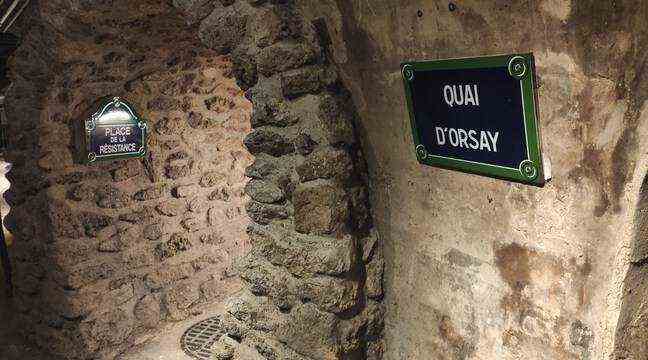A city under the city. This Saturday, October 23, the Paris Sewer Museum will reopen its doors after three years of work. The opportunity for visitors to discover a maze that stretches three meters under the feet of Parisians. On the Quai d’Orsay, a few steps from the Seine, the museum invites you to visit the daily life of the 270 sewer workers who work every day to operate and maintain the 2,600 kilometers of underground passages that see rain and wastewater pass through. from the capital.
The 500 meters of galleries to explore allow you to discover the history of the network, from the 19th century to the present day, in particular detailing the work of Eugène Belgrand, an engineer who participated in the renovation of the sewers. We can also see the rudimentary equipment of the first sewer workers, like those, much more elaborate worn by current workers. Friezes displayed on the wall tell the story of how the sewers work and a few films help to understand the complexity and the primordial role of these underground passages in everyday life.
Animated models show the course of the water in a Parisian’s washing machine, the fate of his flush, the different parts and canals that make up the sewers. Even the toilets have educational activities.
A mirror of the surface
But for total immersion, the rest of the visit takes place directly in the tunnels used by professionals. Visitors will be able to walk real underground streets. And it’s not just an image since the basement is a mirror of what is happening in broad daylight: street signs, building numbers, the entire surface is listed. “In particular, it allows us to know where certain things may come from that should not be thrown into the sewers,” explains Emmanuel Olivard, team leader and technician in operational services.
The museum’s route passes over the waters of the city which slip by under the feet of the visitors in a sound of waterfall. It allows you to discover all the machines used. The giant wagons which are used to remove the sand from the sewers to make the flow more fluid, the sensors which constantly show the temperature, the pH of the water or the quantity of bacteria such as Escherichia coli (indicator of faeces).
Sewer workers for guides
The questions will easily be answered since the guides are none other than sewer workers – or former sewer workers – who are part of teams formed to take turns making these visits. Some will be able to tell the story of Eleanor, the only crocodile listed in the history of the sewers, collected in 1984, this female died this year.
To recognize these guides, just follow the regular “beeps” that come out of the yellow box they wear on them. “It’s a gas detector”, explains Emmanuel Olivard, before specifying that if they are monitored, they are not the greatest danger for the sewer workers who fear even more a fall or drowning.
“Actors of the ecological transition”, according to Camille Brossel, deputy mayor of Paris, in charge of the cleanliness of public spaces, the sewers of Paris also present the current and future projects for the sanitation of the Seine and the Marne, in particular with a future water retention basin in the Austerlitz district. Ideally placed thanks to the difference in level offered by the 13th arrondissement, it will be able to contain “the equivalent of 20 swimming pools”, according to the elected representative, and will have to recover the rainwater of the capital during exceptional falls in order to relieve the sewers and avoid that these do not flow into the Seine. It therefore participates in the objective of the city of Paris to make the Seine and the Marne “swimmable” by 2024. If they doubt it, future swimmers can come and be reassured at the Paris Sewer Museum.

